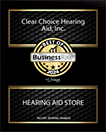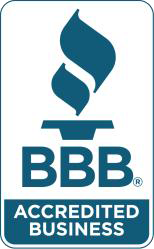
A loud workplace isn’t very good for your ears (or your focus, for that matter). Your hearing health can be negatively affected by even moderate noise levels if you’re exposed to it for several hours every day. For this reason questions like “what hearing protection should I use?” are worth asking.
It’s not common knowledge that several levels of hearing protection are available. But when you take a moment to consider it, it makes sense. A jet engine mechanic is going to need a different level of protection than a truck driver.
Hearing Damage Levels
The standard rule of thumb is that 85 decibels (dB) of sound can start harming your ears. Putting sound into context regarding its decibel level and how harmful it is, isn’t something most of us are used to doing.
Eighty-five decibels is approximately how loud city traffic is when you’re sitting inside your car. That’s not a big deal, right? Wrong, it’s a big deal. At least, it’s a big deal after eight hours. Because it’s not just the loudness of the noise that you need to pay attention to, it’s the duration of exposure.
Typical Danger Zones
If you’re exposed to 85 dB of noise for eight hours every day or more, you need to consider wearing hearing protection. But there are a few other important thresholds to take note of. If you’re exposed to:
- 90 dB (e.g., lawnmower): Anything over four hours is considered damaging to your ears.
- 100 dB (e.g., power tools): Anything above one hour will be damaging to your ears.
- 110 dB (e.g., leaf blower): Injury to your hearing takes place after 15 minutes of exposure to this noise level.
- 120 dB (e.g., rock concert): Any exposure can cause damage to your hearing.
- 140 dB (e.g., jet engine): This amount of noise will cause immediate damage and most likely pain to your ears.
When you are going to be exposed to these volumes of sound, use hearing protection that will bring the volume in your ears down below 85 dB.
Make Sure Your Hearing Protection Fits Comfortably
NRR, which is an acronym for Noise Reduction Rate, is a scale used to determine the effectiveness of hearing protection. The outside world will be progressively quieter the higher the NRR.
Most workplaces will have guidelines as to what degree of protection will keep your ears safe because it’s essential to have the correct protection.
But there’s another aspect to think about also: comfort. It’s very essential that your hearing protection is comfortable to wear if you want to keep your ears safe. This is because you’re less likely to actually wear your hearing protection if it isn’t comfortable.
Hearing Protection Options
There Are Basically Three Options:
- Earmuffs.
- Earplugs that sit just outside of the ear canal.
- In-ear earplugs
Each form of protection has benefits and drawbacks, but the majority of your hearing protection choices will depend upon personal preference. Earmuffs are a better option for individuals whose ears are irritated by earplugs. For other people, the ability to put earplugs in and leave them in is a better solution (obviously, you won’t want to forget them for too long… you should take them out at the end of your workday. And clean them).
Consistently Use Protection That Works Best For You
Any laps in your hearing protection can lead to damage, so comfort is a major factor. If earmuffs are scratchy and uncomfortable you’re more likely to take them off for short periods and that can have a negative effect on your hearing over time. This is why hearing protection that you can leave in for the whole workday is the best option.
You’re ears will stay happier and healthier if you find the correct level of hearing protection for your situation.
References
https://www.cdc.gov/nceh/hearing_loss/what_noises_cause_hearing_loss.html
The content of this blog is the intellectual property of MedPB.com and is reprinted here with permission.
The site information is for educational and informational purposes only and does not constitute medical advice. To receive a personalized free hearing test and hearing loss consultation, call today to set up an appointment.










